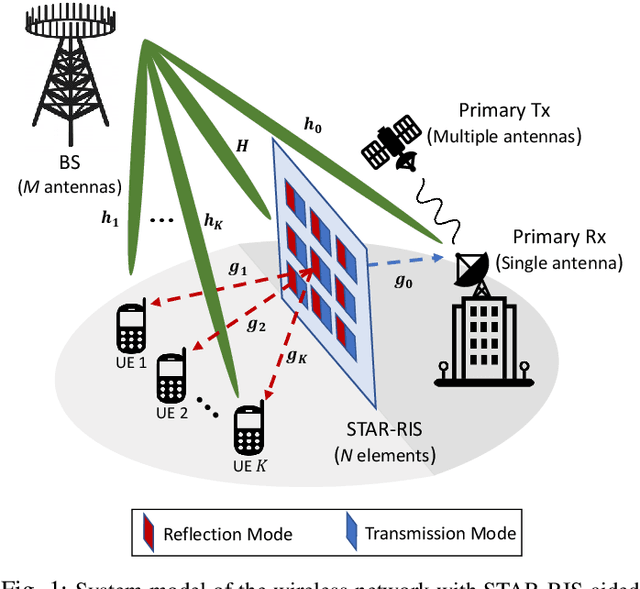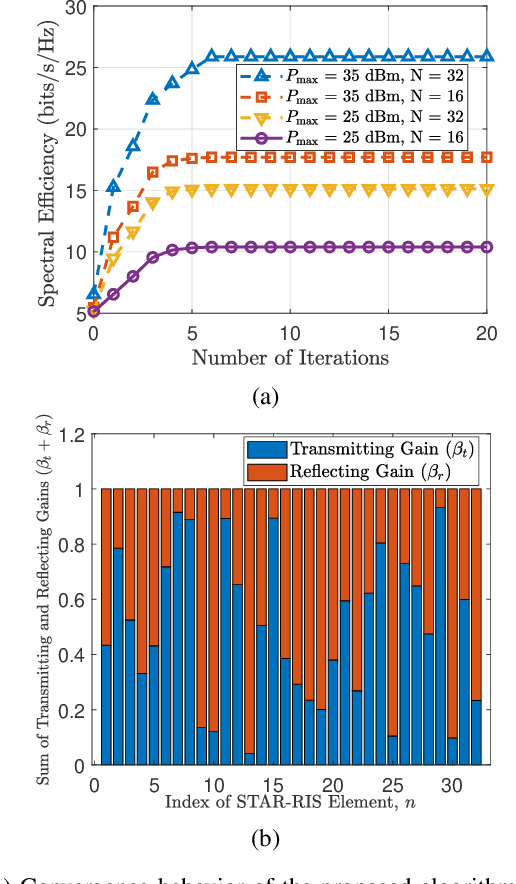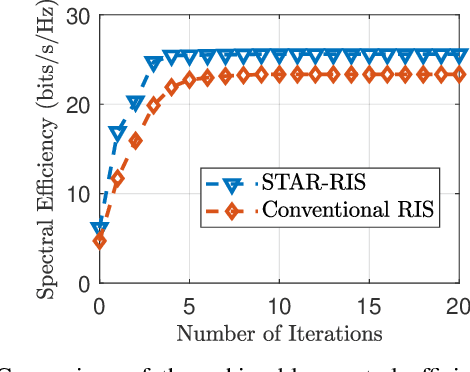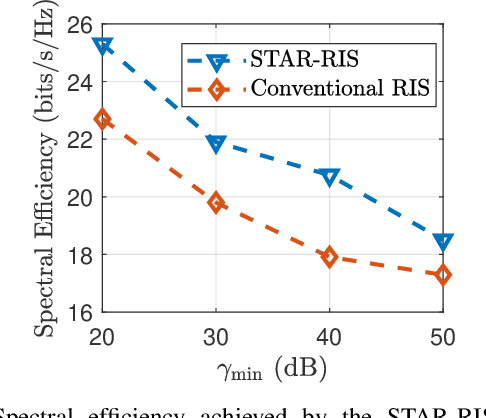David R. Smith
Simultaneous Transmitting and Reflecting (STAR)-RIS for Harmonious Millimeter Wave Spectrum Sharing
Jan 25, 2023



Abstract:The opening of the millimeter wave (mmWave) spectrum bands for 5G communications has motivated the need for novel spectrum sharing solutions at these high frequencies. In fact, reconfigurable intelligent surfaces (RISs) have recently emerged to enable spectrum sharing while enhancing the incumbents' quality-of-service (QoS). Nonetheless, co-existence over mmWave bands remains persistently challenging due to their unfavorable propagation characteristics. Hence, initiating mmWave spectrum sharing requires the RIS to further assist in improving the QoS over mmWave bands without jeopardizing spectrum sharing demands. In this paper, a novel simultaneous transmitting and reflecting RIS (STAR-RIS)-aided solution to enable mmWave spectrum sharing is proposed. In particular, the transmitting and reflecting abilities of the STAR-RIS are leveraged to tackle the mmWave spectrum sharing and QoS requirements separately. The STAR-RIS-enabled spectrum sharing problem between a primary network (e.g. a radar transmit-receive pair) and a secondary network is formulated as an optimization problem whose goal is to maximize the downlink sum-rate over a secondary multiple-input-single-output (MISO) network, while limiting interference over a primary network. Moreover, the STAR-RIS response coefficients and beamforming matrix in the secondary network are jointly optimized. To solve this non-convex problem, an alternating iterative algorithm is employed, where the STAR-RIS response coefficients and beamforming matrix are obtained using the successive convex approximation method. Simulation results show that the proposed solution outperforms conventional RIS schemes for mmWave spectrum sharing by achieving a 14.57% spectral efficiency gain.
Holographic Metasurface Antennas for Uplink Massive MIMO Systems
Aug 27, 2021



Abstract:We propose an uplink massive MIMO system using an array of holographic metasurfaces as a sector antenna. The antenna consists of a set of rectangular waveguide-fed metasurfaces combined along the elevation direction into a planar aperture, each with subwavelength-sized metamaterial elements as radiators. The metamaterial radiators are designed such that the waveguide-fed metasurface implements a holographic solution for the guided (or reference) mode, generating a fan beam towards a prescribed direction, thereby forming a multibeam antenna system. We demonstrate that a narrowband uplink massive MIMO system using the metasurfaces can achieve the sum capacity close to that offered by the Rayleigh channel at 3.5 GHz. We show that metasurfaces supporting multiple fan beams can achieve high spatial resolution in the azimuth directions in sub-6 GHz channels, and thereby form uncorrelated MIMO channels between the base station and users. Also, the proposed metasurface antenna is structurally simple, low-cost, and efficient, and thus is suitable to alleviate RF hardware issues common to massive MIMO systems equipped with a large antenna system.
 Add to Chrome
Add to Chrome Add to Firefox
Add to Firefox Add to Edge
Add to Edge